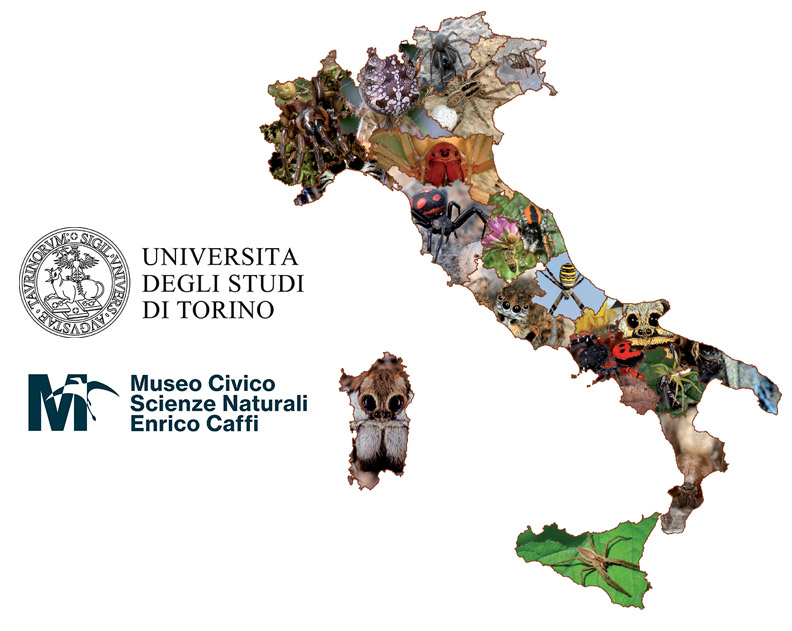
Knowing the biodiversity of a certain area primarily means understanding the quantity and the quality of the taxainhabiting it. Such kind of information represents the basis for all scientific studies focusing on any species occurring in a specific area. In addition, biodiversity data are essential for nature conservation, fruition and management.
Thanks to the publication of the Checklist of the Italian species of Animals, Italy is the first country in Europe organizing a national-based faunistic census (Minelli, Ruffo & La Posta, 1993-1995). Some years later, the CKMap Project (Ruffo & Stoch, 2005) aimed to quantify and consolidate the knowledge of biodiversity in Italy.
Despite these important research projects, knowledge on Italian biodiversity still remains far from being complete, in particular when considering Invertebrates (Ruffo & Vigna Taglianti, 2002). Among Invertebrates, spiders are highly diverse predators, capable of colonizing all terrestrial habitats. Moreover, given their sensibility to human-induced environmental changes and their strategic position in the food chain, spiders are particularly important in ecological studies.
In this comprehensive work, we aim at providing an updated framework of the knowledge on the Italian spiders by presenting a synthesis of all available published scientific information regarding spiders in Italy including data on biogeography, bibliography and taxonomy. In addition, we include a minor section providing the list of the species of other Orders of Arachnids occurring in Italy.

Minelli A., Ruffo S., La Posta S. (eds.) 1993- 1995 - Checklist delle specie della fauna italiana. Edizioni Calderini,Bologna.
Ruffo S., Stoch F. (eds.) 2005 - Checklist e distribuzione della fauna italiana. Memorie del Museo Civico di Storia Naturale di Verona, 2a serie, Sezione Scienze della Vita, 16: 307 pp.
Ruffo S., Vigna Taglianti A. 2002 - Generalità sulla fauna italiana. In: Minelli A., Chemini C., Argano R. & Ruffo S. (a cura di), La fauna in Italia, Touring Editore, Milano e Ministero dell'Ambiente e della Tutela del Territorio, Roma: 24-28